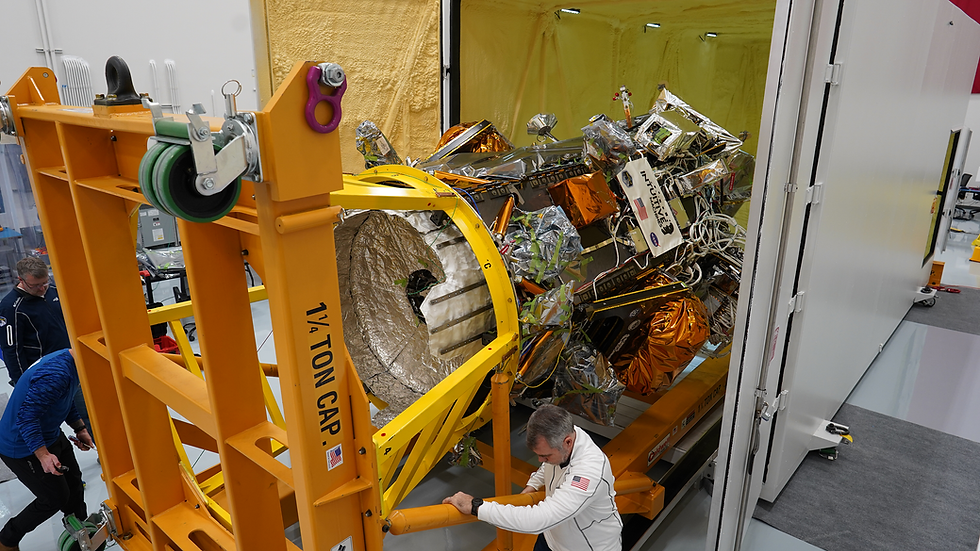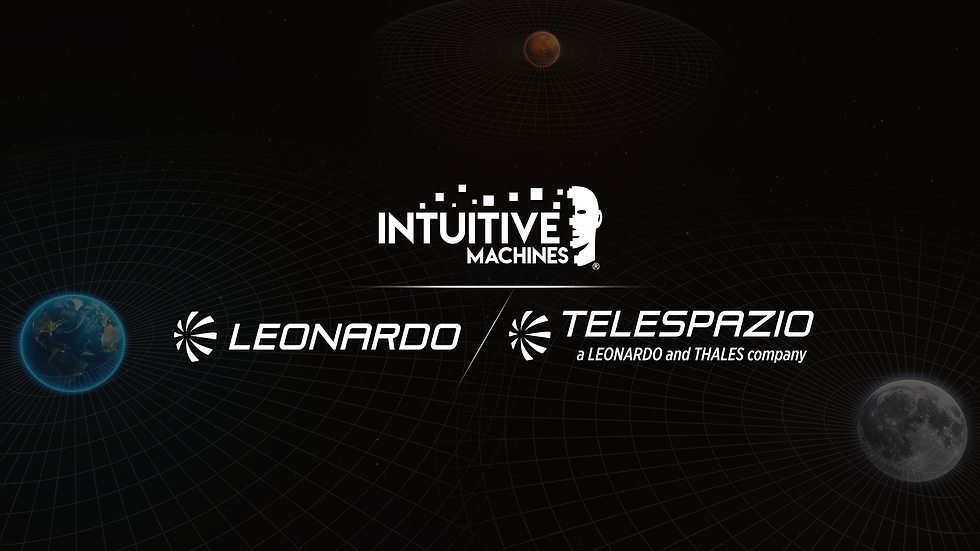Intuitive Machines Nova-C Lunar Lander Arrives in Cape Canaveral, Florida
- Hunter Christian
- Dec 4, 2023
- 2 min read
Intuitive Machines, Inc. (Nasdaq: LUNR, LUNRW) (“Intuitive Machines”) (“Company”), a leading space exploration, infrastructure, and services company, has announced the successful delivery of its IM-1 mission Nova-C lunar lander to Cape Canaveral, Florida.
“Reaching this tremendous milestone has built a four-year foundation of technical excellence earned through challenges, failures, and triumph; I’m so proud of this team leading the United States back to the Moon,” said Intuitive Machines CEO Steve Altemus. “The opportunity to deliver the first of three manifested lunar landers with NASA and commercial payloads is an incredible moment for the entire commercial aerospace industry, and I’m looking forward to this launch as well as our subsequent missions in the near future.”
In coordination with SpaceX, the liftoff of the IM-1 lunar mission is targeted for a multi-day launch window that opens no earlier than January 12, 2024. In case of unfavorable launch conditions, such as poor weather, backup opportunities will be determined based on the lunar blackout window and other factors.

The Company’s IM-1 mission will be operated from Intuitive Machines’ Nova Control Center in Houston, Texas. There, flight controllers will monitor spacecraft health, send commands, and receive data during the lander’s approximate six-and-a-half-day journey to the lunar surface using the Company’s commercially available Lunar Data Network. After landing, Intuitive Machines and its customers expect Nova-C to operate in the lunar south pole region for nearly two weeks.
As previously announced, Intuitive Machines completed the IM-1 lunar lander in September at the Company’s Lunar Production and Operations Center located at the Houston Spaceport. In late November, the lander was loaded into a custom-designed air ride ground transport system and delivered to Cape Canaveral, Florida.
IM-1 will be the Company’s first of three manifested attempted lunar landings as part of NASA’s Commercial Lunar Payload Services (“CLPS”) initiative, a key part of NASA’s Artemis lunar exploration efforts. The science and technology payloads sent to the Moon’s surface as part of CLPS intend to lay the foundation for a sustainable human presence on the lunar surface and the commercial development of the Moon. View .pdf



